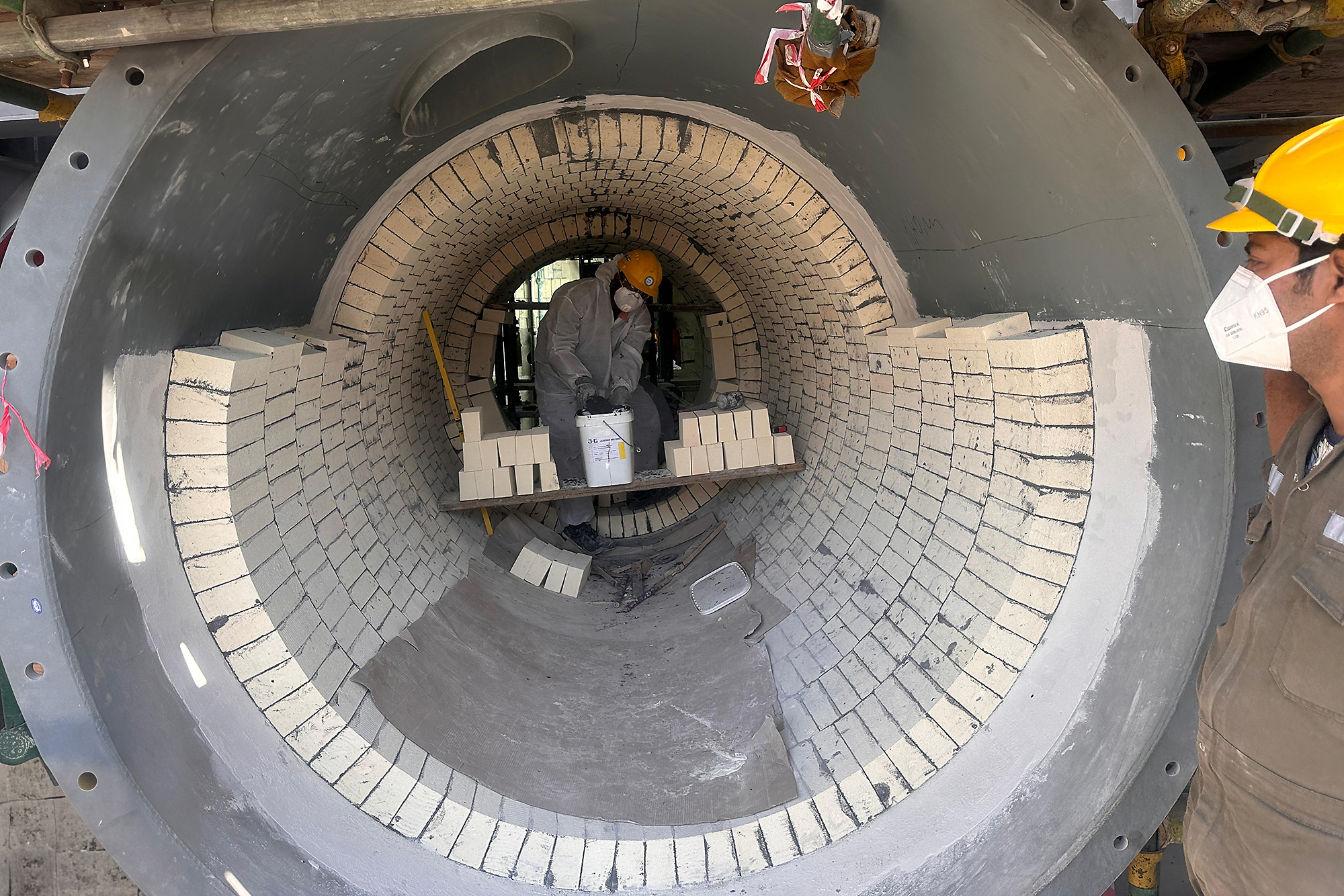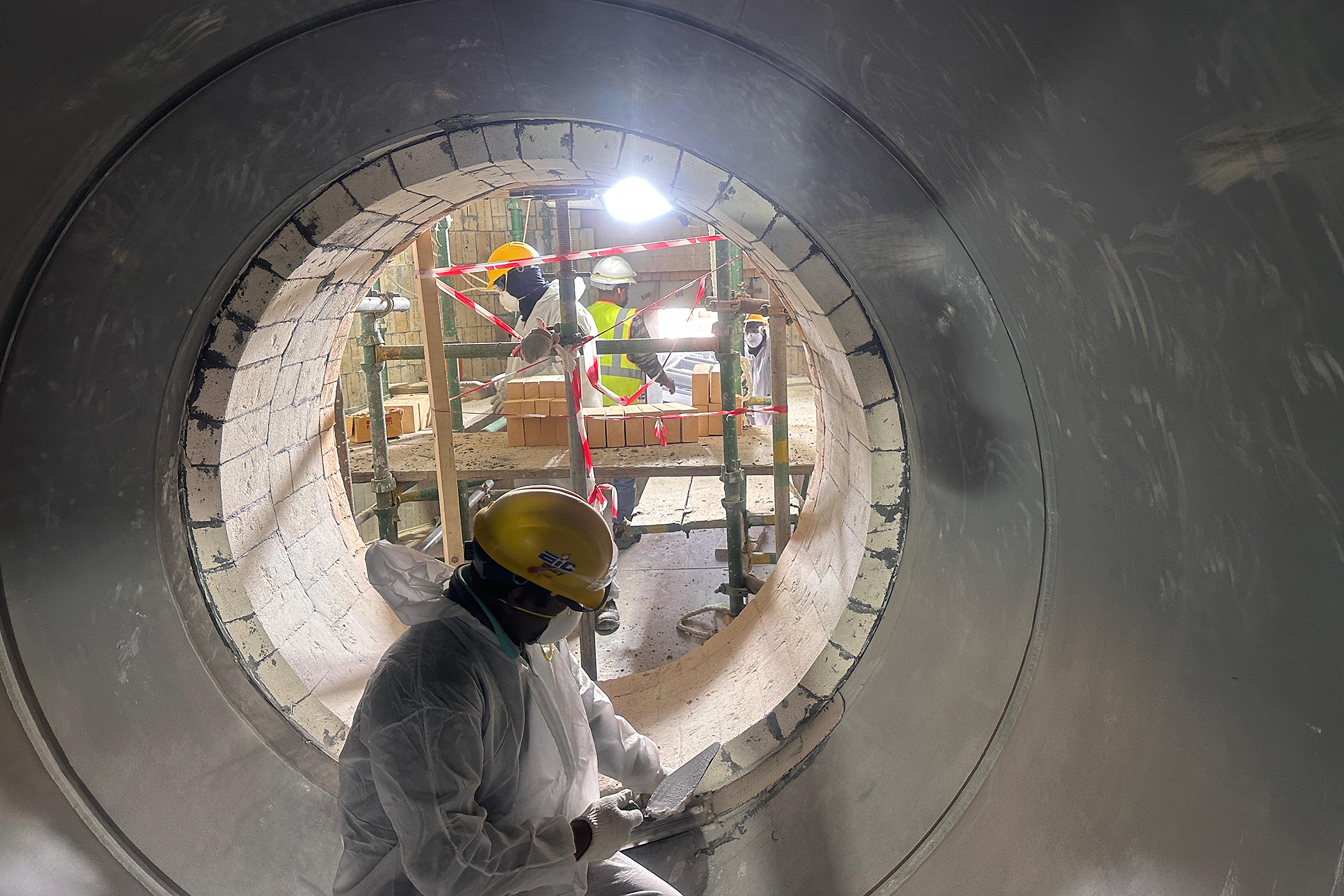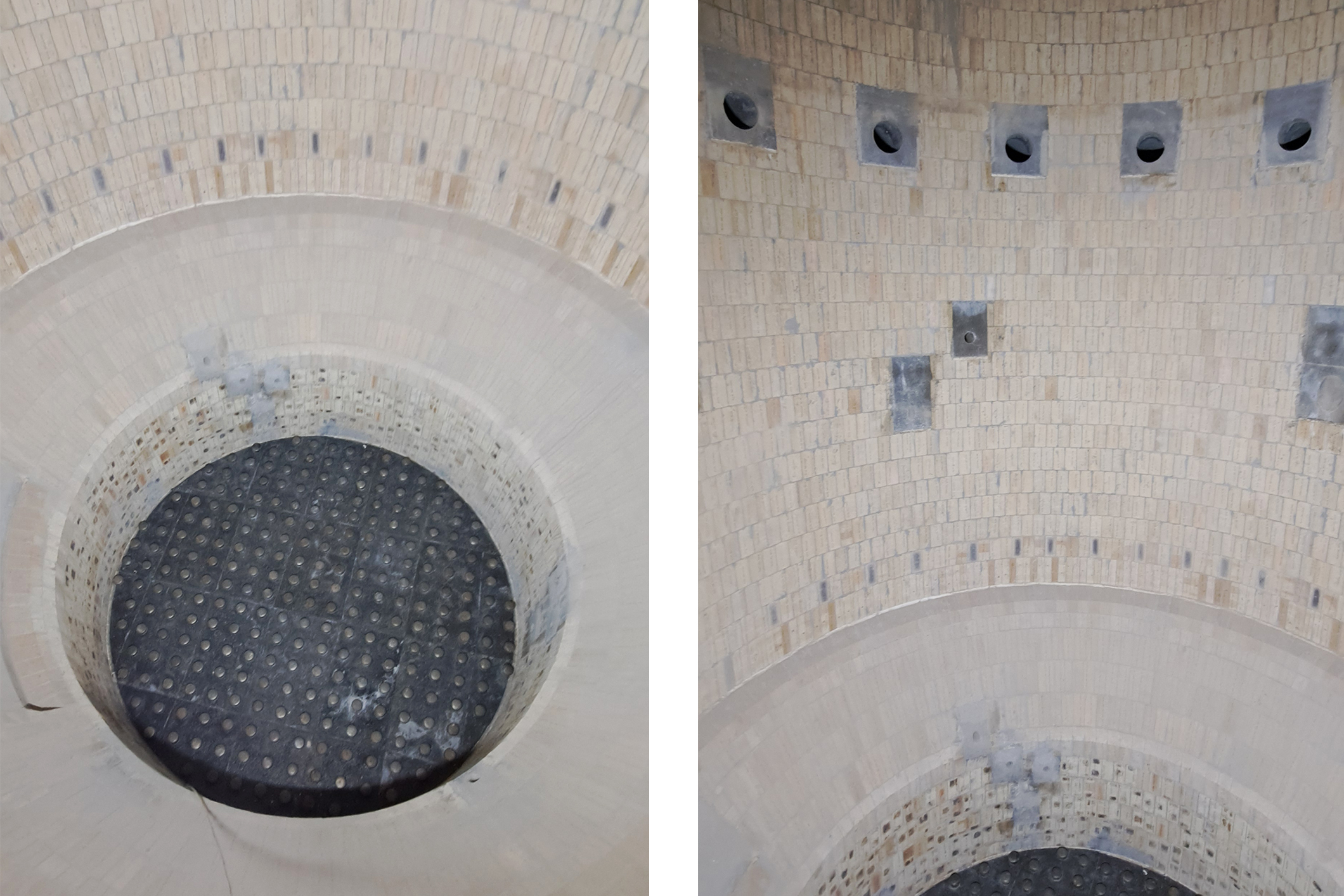
Published on:

Recently, the lining of two fluidised bed furnaces was successfully completed at the sewage sludge incineration plant that WTE is currently building in Tubli (Bahrain). Over the past five months, around 400 tonnes of lining material have been installed for the high-performance furnaces. The furnaces have to withstand temperatures of up to 1,000°C, have a diameter of around five metres and a height of around 20 metres.
Challenging conditions
The tight space around and inside the furnaces and the high ambient temperatures in Bahrain required great precision and skill from the fitters. The special refractory bricks were laid in three layers on top of each other on the furnace wall to ensure a stable and durable brick lining. Each brick had to be placed in exactly the right position so that the structure remained stable and there were no gaps.

High precision and craftsmanship
From an engineering point of view, this brickwork comes very close to a work of art. The precision and craftsmanship demonstrated here are truly impressive and represent a European state-of-the-art standard.

The next step was the controlled dryout of the brickwork to vaporise the remaining water. With this further important milestone, the two fluidised bed furnaces are now almost complete.
Brief digression: How does a fluidised bed furnace work?
Sewage sludge is incinerated at temperatures between 700°C and 980°C in a fluidised bed furnace. The fluidised bed furnace is equipped with a sand bed. The sewage sludge is placed in this sand bed. Preheated air is then blown into the furnace from below. This causes the sand material to fluidise – similar to boiling water, except that the sand ‘bubbles’ and starts to move instead.
The hot sand in the furnace causes the remaining water in the sewage sludge to evaporate. The remaining organic mass of the sludge then burns completely. Temperatures of between 700°C are reached in the sand bed and up to 950-980°C in the upper part of the furnace. In order for the furnace to withstand the high temperatures, it must be lined with special refractory bricks.
The entire project: expansion of the existing wastewater treatment plant and construction of a new sewage sludge incineration plant
As general contractor, WTE is expanding the capacity of the existing wastewater treatment plant in Tubli from 200,000 m³/d to 400,000 m³/d. In addition, we are building a sewage sludge incineration plant with corresponding dewatering and drying in order to utilise the sludge. The two fluidised bed furnaces form the heart of this plant.
In future, 1,673,000 people will be supplied with safe water by the new wastewater treatment.